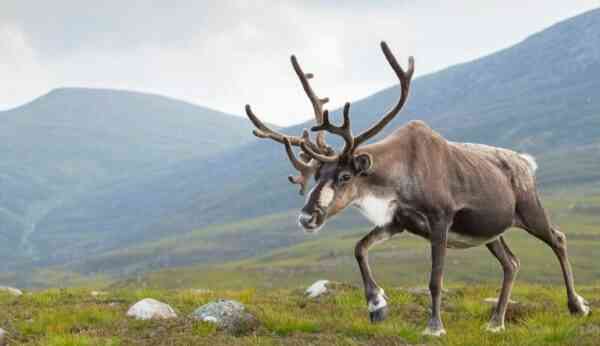It’s not easy to live in a cold climate, but the reindeer has adapted well to it. In the course of evolutionary processes, this animal has learned to endure low temperatures, feed on sparse vegetation and successfully escape from predators. The reindeer is one of the few species that thrive in the subarctic zone, and it was thanks to it that the development of the Far North once became possible at all.
Interesting facts about the reindeer
- Po According to scientists, the existence of about 20 different peoples now depends on reindeer husbandry.
- The unique hooves of reindeer change depending on the season. With the advent of heat, they become softer, and in winter the soft pads disappear. This helps the animals not to slip on the ice and more effectively dig snow with their feet in search of moss reindeer moss.
- They live in the tundra and taiga, and the tundra subspecies is inferior in size to the taiga (interesting facts about the tundra).
- For some indigenous small peoples of the North, domesticated reindeer have become the main means of subsistence, and have taken an important place in their cultures.
- In the US, reindeer are called «caribou».
- The fur on their skin is hollow inside, making them incredibly efficient at retaining heat. That is why the locals value fur clothes made from reindeer skins so much.
- These animals are excellent swimmers, and there is confirmed evidence of how they swam across rivers 5-7 km wide, despite the very low water temperature.
- Most species of deer only grow antlers on males, but northern deer also have antlers on females (interesting facts about deer).
- Reindeer antlers contain a lot of calcium and other useful substances. When deer drop them, the antlers are quickly eaten by various rodents.
- Female reindeer shed their antlers much later than males. They get rid of them at the very beginning of winter.
- Daily, these graceful animals travel up to 25-30 km in search of food.
- Of all the mammals on Earth, reindeer are the only ones capable of seeing in ultraviolet spectrum.
- Newborn deer can walk independently already an hour after birth.
- Reindeer milk is 5-6 times fatter than cow’s milk, and about twice as fat as moose milk.
- In the warm season, they eat a lot of mushrooms, so the locals don’t pick them. If they eat all the mushrooms, the deer population may decline, which means certain death for many local peoples, consisting of hunters and fishermen (interesting facts about mushrooms).
- Reindeer are found at an altitude of up to 2 kilometers above sea level, although they mostly inhabit lower elevations.
- Thanks to the coarse hair growing near the hooves, they not only do not fall into the snow, but also leave virtually no marks on it.
- The frost resistance of reindeer is partly due to their thick layer of subcutaneous fat.
- Most species of deer have a hairless nose on their noses, but northern deer have a completely wooly nose because they often plunge their faces into the snow.
- Since there is little food in the cold conditions of the North, the deer living there eat everything they find – leaves, mushrooms, berries, moss and lichens. On occasion, they can even eat small animals or bird eggs.
- Adult reindeer can reach 2 meters in length and 1.5 meters in height, with a mass of up to 200-210 kg.
- Males often fight over females, but they rarely die. Although the antlers break off each other with enviable regularity.
- Almost always, the female reindeer gives birth to only one cub, although there were cases when three or even four were born at once.
- On average, the northern deer live for 10-15 years, but in captivity, with good care, sometimes they live up to 30.
- Males and females with young animals usually form separate herds. They mix together only in early autumn, when the breeding season approaches.
- When the snow is more than 70 cm thick, reindeer expend more energy digging it than they get by eating the vegetation found under the snow cover.
